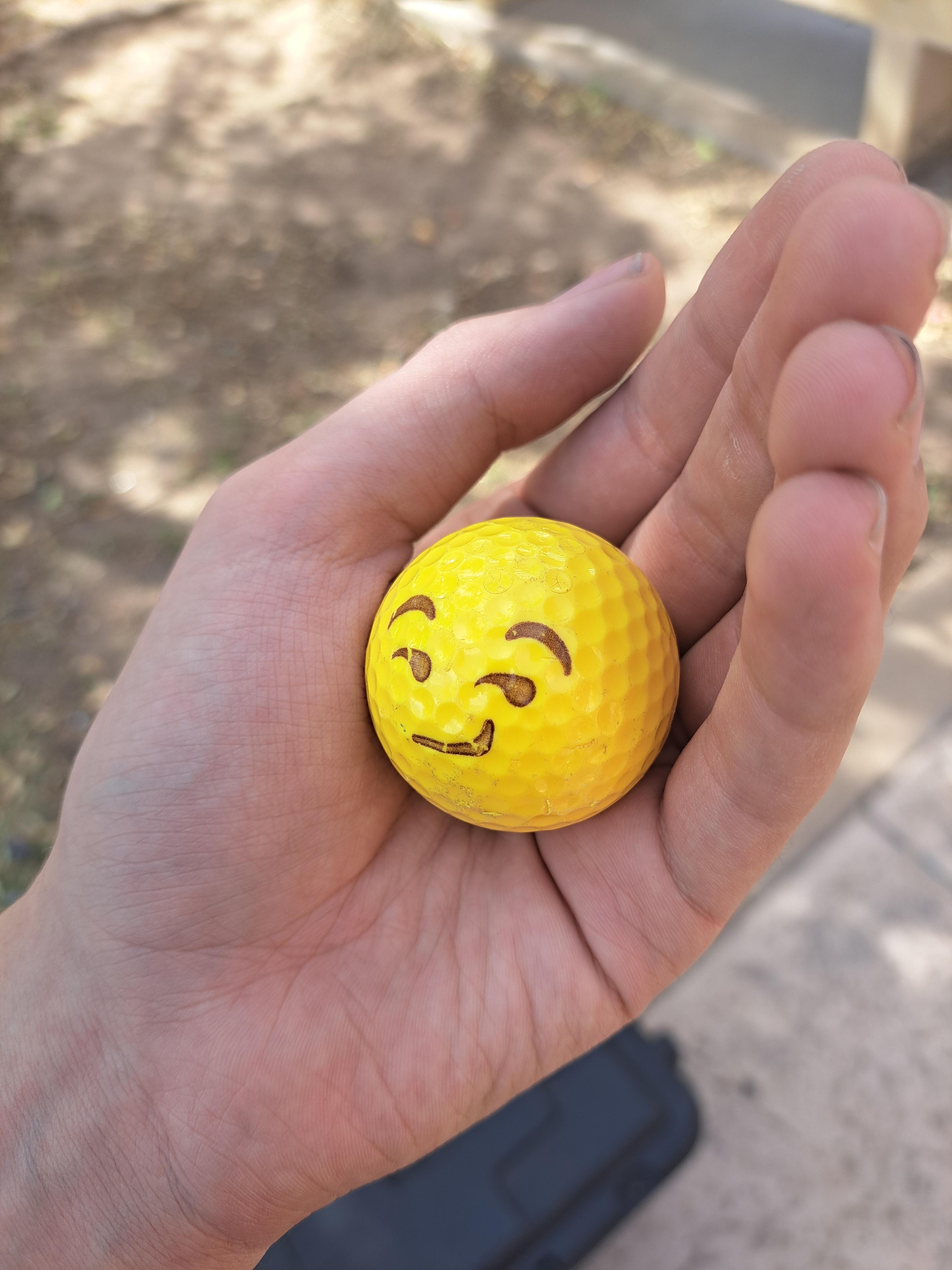TheLuigiNoidMan last won the day on December 5 2024
TheLuigiNoidMan had the most liked content!
Reputation
144
Likeable
See reputation activity
About TheLuigiNoidMan
-
Rank
Newbie

Profile Information
-
Minecraft username
TheLuigiNoidMan
Recent Profile Visitors
5143 profile views
-
 Aisu Uchibi reacted to a post in a topic:
M1 Garand
Aisu Uchibi reacted to a post in a topic:
M1 Garand
-
 TheLuigiNoidMan reacted to a post in a topic:
Mine-imator 2.0.2 Continuation Build 1.0.10
TheLuigiNoidMan reacted to a post in a topic:
Mine-imator 2.0.2 Continuation Build 1.0.10
-
Now introducing a rifle that requires no introduction, the M1 Garand. This semi-automatic rifle was designed and used extensively by the United States of America, primarily during the Second World War. It's design is exceedingly iconic, being recognized as a legendary staple of firearms across the world while also influencing various gun designs. Although militaries still globally relied on bolt-action rifles, the US Army was able to fully adopt the Garand as a standard-issue weapon in 1936, making it the most advanced infantry force in the entire world by WW2 due to impressive details that are still seen on some firearms to this day. Its design is incredibly practical and devastatingly accurate, which was significant for an automatic rifle. One of the rifle's most recognizable features is its abnormal ammo system; unlike typical stripper clips, it was fed by .30-06 Enbloc clips holding 8 double-stacked rounds of ammunition, which was completely unlike any rifle in use. This was made especially unusual by the ejection mechanism, which not only flings the clip upward once empty, but is accompanied by the infamous ping the rifle is known for. As a result of its overwhelming success, the US would try to adapt the M1 Garand to other roles throughout the military. The M14 was designed as an attempt to modernize the M1 into an assault rifle in the 1950s, which was not only magazine-fed, but also accepted stripper clips. The .30-06 caliber had an extreme and uncontrollable amount of recoil in full-auto, which made the rifle fail in the attempt to rival other assault rifles, primarily the AK-47. In need of a new light machine gun, the US also made a bizarre attempt to replace the M1918A2 BAR with the M15, a heavier version of the M14 with a bipod. This attempt was a complete failure, as the BAR remained more effective and reliable in full-auto despite nearing obsoletion. Ultimately, the US would give up with either attempt to keep the M1 Garand relevant, and settled on the M16, which is based off the AR-15 design that is still in service today. Click Here to Download!
-
 TheLuigiNoidMan reacted to a post in a topic:
Cupcake
TheLuigiNoidMan reacted to a post in a topic:
Cupcake
-
 QFFly reacted to a post in a topic:
Anatomically Correct Hands (and arms)
QFFly reacted to a post in a topic:
Anatomically Correct Hands (and arms)
-
Nothing2007 started following TheLuigiNoidMan
-
 ItsBendyDemon reacted to a post in a topic:
Anatomically Correct Hands (and arms)
ItsBendyDemon reacted to a post in a topic:
Anatomically Correct Hands (and arms)
-
 ItsBendyDemon reacted to a post in a topic:
Renaissance Weaponry
ItsBendyDemon reacted to a post in a topic:
Renaissance Weaponry
-
 courageous827 reacted to a post in a topic:
Renaissance Weaponry
courageous827 reacted to a post in a topic:
Renaissance Weaponry
-
 PearAnimations reacted to a post in a topic:
Renaissance Weaponry
PearAnimations reacted to a post in a topic:
Renaissance Weaponry
-
Introducing my most ambitious project yet, a pack revolving entirely around Renaissance-Era Weaponry. There are a total of 24 different weapons here, ranging from swords and spears to... something more explosive. There were many different forms of weaponry in the Renaissance Swords Single Handed - Arming Sword Messer Rapier Scimitar Falchion Swords were the most versatile and common weapons of this era, being reliable and easy to wield. Dual-Handed - Longsword Zweihaender Estoc Flamberge Claymore Heavier, dual-handed swords required more experience to utilize, but were devastatingly iconic weapons during their time. Polearms Spontoon Pike Morning Star Glaive Billhook Halberd Along with their incredibly long size, polearms were very swift tools among trained soldiers, and would often make a large difference when used correctly. Maces Spiked Club Star Mace Flanged Mace Flail These smaller weapons were quick and nimble, and unlike the other weapons in this pack, they primarily inflict blunt damage instead of cutting foes down. If you have ever seen any of my previous models, you already know I can't resist making a good gun. Thankfully, the Renaissance does not disappoint. Gunpowder Weapons Handgonne Hand Culverin Arquebus Cannon Brass and Iron variants Loading tool and ammunition included Although the Renaissance is known for its intricate swords, spears and armor, what truly differentiated it from the Medieval era was the spread of blackpowder to the entire world. Within only a single century, most nations across the globe immediately ditched their traditional arrows and catapults, in favor of modern bullets and cannons. Click Here to Download! I hope the long wait past my last project was worth it.
-
 Fox Miner reacted to a status update:
Huzzah, a stolen model!!! 🥳 Of all the models they chose from, why the one of worst o
Fox Miner reacted to a status update:
Huzzah, a stolen model!!! 🥳 Of all the models they chose from, why the one of worst o
-
Huzzah, a stolen model!!!



Of all the models they chose from, why the one of worst ones I've ever made?
Oh well, on to the next one.
-
 Lorettanevy reacted to a post in a topic:
Anatomically Correct Hands (and arms)
Lorettanevy reacted to a post in a topic:
Anatomically Correct Hands (and arms)
-
 Duychung reacted to a post in a topic:
Colt Navy Revolver
Duychung reacted to a post in a topic:
Colt Navy Revolver
-

Mine-imator 2.0 3D model converter! (mostly)
TheLuigiNoidMan replied to manicminermemer's topic in Modding discussion
... How the actual [insert exclamation here] is this even real -
In the early 19th Century, most conventional firearms could only hold a single bullet at a time, requiring a lengthy process to reload guns every time they were fired. Although they were used as an extremely powerful weapon for many generations, their simplistic design would inhibit the overall capability of any military wielding them. However, by the 1830s, certain advancements in technology and manufacturing would allow for a new type of firearm to be designed; although the design was unsuccessful when adapted to rifles, it would permanently revolutionize the world of sidearms for the rest of history. These revolutionary pistols are well known as Revolvers. Although these pistols, designed primarily by Samuel Colt, initially weren't successful, trial and error would lead to an overwhelming commercial success in the United States of America as time went on, eventually becoming a staple of weapon design across the world. While these designs were indirectly inspired by earlier pepperbox pistols, their ability to automatically rotate the cylinder every time the hammer was pulled is what allowed revolvers to surpass the firearms before them. Most revolvers were originally percussion designs (otherwise known as Cap and Ball), which involved the hammer directly striking a cap that ignited the black powder charge within a cylinder's chamber, shooting the bullet out of the gun. Although the multi-round capacity of these firearms meant that reloading would be significantly longer than the average single round pistol, the fact that you could fire several bullets before needing to reload at all allowed them to become extremely potent weapons during their time. These long reloading processes would eventually become a thing of the past, as they would become obsolete with the introduction of metallic cartridges. This model is specifically based on the 1851 Colt Navy design, which was extremely popular among both sides of the American Civil War. It was the last percussion revolver made by Colt's Manufacturing Company and was finally discontinued in 1873, when it was replaced by the Colt Single Action Army. It held six .36-caliber rounds, and had a built-in ramming rod for reloading, as many revolvers did. Although revolvers are still somewhat simplistic, ornate decorations such as engravings or extravagant materials could often be seen on these guns, making certain revolvers incredibly fancy and highly coveted by collectors to this day. The Colt Navy was no exception to this trend, and this model allows for the modification of multiple parts of this gun. In order to do this, you must import all of the textures into your project's Resources tab. There are four materials to choose from, being Metal, Steel, Silver, and Brass, and grip textures vary with each material. As for engravings, I decided not to texture any, although there is nothing stopping you from simply creating your own engraving textures and overlaying them within Mine-Imator or even Modelbench. Shouldn't be too difficult... A powder flask is also included with this model. Click here to download! I sincerely hope you have fun using this model!
-
Densuki started following TheLuigiNoidMan
-
akkkixi started following TheLuigiNoidMan
-
El programa se llama 'Modelbench', y es de la misma gente que Mine-Imator
-
Ajolote_pro started following TheLuigiNoidMan
-
 TheLuigiNoidMan reacted to a post in a topic:
Team Fortress 2 | Engineer weapons pack + Panic attack Alt ver
TheLuigiNoidMan reacted to a post in a topic:
Team Fortress 2 | Engineer weapons pack + Panic attack Alt ver
-
Some people have used Mine-Imator in the past to make cool and creative animations, usually in third person. However, for those attempting first person animations, the typical blocky fingers protruding out of Steve's arms might not fit as well with certain animation styles, possibly making someone feel as if they needed a hand with making their animations look better. If for whatever reason, you happened to be one of these mythical people with a problem, you can now look to having (mostly) anatomically correct hands in Mine-Imator. This isn't meant to replace the usual formula for hands and fingers in Mine-Imator, but is primarily meant to give a better alternative to first person animations. Although this would look freaky when compared to the usual Minecraft character models, it can be reasonably used on its own. It's much more open to articulation, now being unrestrained from Steve's horrifically chunky arms, and has relatively realistic proportions compared to what you would normally expect from Mine-Imator in general. Obviously, I am not the first person to have made a model such as this, but I have included a sleeved model in case you need modeled cloth before the palm of the hand. I also included the CS:S skin as a sample to toy around with the model incase you are interested in using such a thing. Of course, I can't just toss out a random and obscure model out into the wild without atleast showcasing what its capable of, so I compiled a showcase of reload animations to display how this model can be used. Click here to download!
- 3 replies
-
- hands
- first person
-
(and 1 more)
Tagged with:
-
As the 20th Century approached, France was equipped with the Lebel M1886, a revolutionary, yet quickly-aging rifle that, eventually became known for its own shortcomings despite introducing the concept of smokeless powder. Its long 8-round tube magazine made reloading difficult and cumbersome in certain situations, and shortening the barrel for carbine configurations often led to more issues than initially expected. As a result, France began looking into other options to adopt a standardized military carbine. Thus, the Berthier Carbine was created to suit the requirements of the French military while still being chambered in 8mm Lebel. It originally ditched the 8-round tube magazine for a 3-round Enbloc Clip, which was immensely compact and could be instantly reloaded within a matter of seconds, solving the several problems that the Lebel was known for. However, it also introduced a new problem, as its short 3-round capacity meant that ammo consumption was a major concern. Nonetheless, it was effective enough that France would even design rifle variants of the original Berthier to supplement the standard Lebel. When the First World War forced France into constant trench warfare on the western front, it became very apparent that neither the Lebel or Berthier designs were adequate enough for most trench conditions; the Lebel's long length and unbalanced weight made it very unwieldy in close quarters, whereas the Berthier's short ammo capacity made the design riskier to use in close quarters, along with the bottom ejection port letting mud and dirt make it more unreliable than other firearms. Due to this, France made some of the final and most successful modifications to the Berthier halfway through the war. Introducing a 5-round enbloc clip, along with a hinged dust cover for its ejection port, the Modèle 1916 Berthier was designed to successfully solve problems that French soldiers encountered in trench conditions. While rifle variants were meant to be introduced, the carbine variant was ultimately the most produced version throughout the entire war, becoming the most successful variant to date. After the war finally ended, the French military would stick to this carbine for years, even after the introduction of newer rifles. After the outbreak of the Second World War, equipment shortages meant that many soldiers suddenly had to rely on their former Lebel and Berthiers, with the M1916 being the most favored before and after France's quick defeat. Click here to download!
-
Shy_animator started following TheLuigiNoidMan
-
Update: Newer, more detailed textures
-
M1941-son Johnson Rifle-son. Not a terrible rifle, but there was a singular alternative that happened to be infinitely better... Still not a terrible rifle.
-
Modelling is only half of the fun. Animating these renders is the part that I'm truly in love with.
- 2 replies
-
- rifle
- machine gun
-
(and 3 more)
Tagged with:
-
The Browning Automatic Rifle was a select-fire machine gun that was designed by John Browning, who was known for their many other designs and influences in the firearms industry, and was used by the United States of America for half of the 20th Century. It was fed with a 20-round .30-06 Magazine, and could fire up to 600 rounds per minute. Initially designed for a marching-fire strategy made to accommodate automatic developments during the First World War, it would instead be used in various other applications such as trench-clearing, squad support fire, or for crimes outside of war altogether. Unlike other late automatic weapons that narrowly missed use in the war, such as the Thompson Submachine Gun, the BAR managed to see some use during the last moments of WW1. However, the war would end a few months after its arrival in Europe, and the BAR would see use elsewhere, whether as foreign variants used by other countries or for organized crime within the US. During the interwar period, however, the US would continuously revise the BAR's design without John Browning, eventually resulting in the M1918A2. This variant was often outfitted with a bipod, stock rest, and eventually a carry handle, intended to be used as a light machine gun for squad support by this point in time. It also had an internal rate reducer that could cut the firerate down to 400 rounds per minute if needed. This variant would see extensive use by the US during the Second World War, and eventually the Korean War. By the time that the US intervened in the Vietnam War, it already sought to replace the BAR with newer alternatives such as the failed M14 rifle, and ultimately, the more somewhat more successful M16 assault rifle and M60 light machine gun. By the 21st Century, the BAR would be phased out entirely from military service. Some additional features: Click here to download!
- 2 replies
-
- rifle
- machine gun
-
(and 3 more)
Tagged with:
-
 TheLuigiNoidMan reacted to a post in a topic:
Uzi Sub Machine Gun
TheLuigiNoidMan reacted to a post in a topic:
Uzi Sub Machine Gun
-
 TheLuigiNoidMan reacted to a post in a topic:
m24 bundlenade
TheLuigiNoidMan reacted to a post in a topic:
m24 bundlenade
-
The M1891 Mosin-Nagant rifle is possibly one of the most prolific bolt-action rifles in the world, being instantly recognizable in both name and look to many. It's popularity rose from its significant usage by Russians throughout half of the 20th Century, and its roles during the world wars as both a front-line infantry weapon and sniper rifle. Its design originates from multiple firearms being trialed by the Russian Empire, with its lead designers being Sergei Mosin, who was rising in the Russian military, and the Nagant Brothers, who were originally based in Belgium. During the trials, Mosin incorporated details and features from other rifles in his design, which was ultimately accepted as the 3-Line Rifle. However, Léon Nagant initiated a legal dispute with Mosin's design, which ultimately led to Russia compensating Nagant and the rifle being known as the M1891 Mosin-Nagant outside of Russia. It was fed with smokeless 7.62x54r ammunition, was often loaded with 5-round Stripper Clips, and allowed the attachment of a socket bayonet. Shortly after the turn of the 20th Century, the Mosin-Nagant's first main use would be in the Russo-Japanese War in 1904, which turned out to be a catastrophic failure for the Russian Empire. Shortly thereafter, Russia would become heavily involved with the outbreak of the First World War, and suffered severe and tragic losses while being directly fought by all of the Central Powers combined. Unfortunately, the Mosin-Nagant itself proved to be an ineffective rifle in combat, Due to weak war preparations, poorly-trained infantry, ineffective logistics, and ridiculously bad coordination, Russia performed so badly during WW1 that they practically ran out of Mosin-Nagant rifles halfway through the war, ultimately depending on Entente exported rifles while shifting weapon production to the United States of America. Eventually, the Russian Revolution forced Russia's surrender in 1917, and would eventually overthrow the government. The instated Soviet Union eventually took over production of the Mosin-Nagant, and made several modifications during the interwar period. One variant, the M91/30, became the rifle's most iconic variant to date, being based off of a previous Dragoon (cavalry) variant, and would see greater use in the Second World War than it did during WW1. During WW2, Russia lost even greater amounts of land than Russia did during WW1 as a result of Operation Barbarossa, seeing greater shortages than in WW1. However, Russia maintained production of the Mosin-Nagant, and managed to rebound from its weakest state unlike its previous leadership. During the war, the Mosin-Nagant was often outfitted with a new, but incredibly effective attachment known as a magnifying scope. The PU Scope was not the first optical scope used on Mosin-Nagant rifles, although its the most recognizable. It could magnify targets up to 3.5x, and perfected the rifle's long-reaching capabilities. Many marksmen and snipers used this scope during WW2, and managed to make a name for themselves with it. Overall, despite being often unreliable or unpredictable as a result of manufacturing quality, the Mosin-Nagant managed to maintain a somewhat unexpected reputation, being loved AND hated by many throughout the century. Click here to download! Scope Disclaimer:
-
- mosin nagant
- ww1
- (and 4 more)
-
 TheLuigiNoidMan reacted to a post in a topic:
Counter-strike 2 | AK-47 [AKM]
TheLuigiNoidMan reacted to a post in a topic:
Counter-strike 2 | AK-47 [AKM]
-
In the Second World War, Europe was wholly unprepared for Germany's invasions, and after the fall of France in 1940, it was immediately apparent to Great Britain that they wouldn't be able to sustain the war against Germany in their current state. As a result, many reforms and decisions were made to prepare the country for direct invasion, including the designation of emergency submachine guns. Among these designs was the STEN submachine gun, its name being an acronym of its designers and manufacturing company. It would soon become an iconic weapon for British forces in the war, seeing various changes and revisions from 1940 to 1945. Initially, emergency SMGs like the STEN were meant to replace the expensive Thompson Submachine Gun in service, which led to the initial STEN Mk. I. It featured a firerate of around 500 RPM and fired in 9mm Parabellum, and while it was one of the only firearms at that time with a folding vertical grip, it was also one of the only firearms with a wireframe stock, which was indicative of Britain's desperate situation. Despite being a step in the right direction, it was still a complicated design that wasn't simple enough to be manufactured quickly and cheaply in high capacity, leading to the improved Mk. II. Despite its contrasting differences to the Mk. I, the Mk. II is immediately the most recognizable variant of the STEN due to being the most highly produced variant throughout the entire war, improving issues with the Mk. I by being extremely cheap and easy to manufacture. However, it still had its problems, being more uncomfortable to handle due to lack of a suitable handguard, and its dirt cheap quality made it extremely vulnerable to malfunction. Despite this, it would persevere as a symbol of British efforts in the war. Eventually, the Mk. III was introduced, further simplifying the STEN design. However, despite being the second-most produced variant, it wasn't any better than the Mk. II in service, which naturally kept it out of the spotlight. While a Mk. IV variant was designed, featuring a built-in folding stock, wireframe pistol grip, and shorter barrel, it was barely manufactured due to even less practicality or effectiveness in combat, which was practically a no-go for a gun that was already somewhat ineffective. Instead, the Mk. V would be the final variant to enter service during WW2. Ultimately, this was the most suitable design of the entire war, as its late development meant that Britain was no longer as desperate for SMGs as they had been at the beginning of the war. It featured a wooden buttstock and grip, with an attached vertical grip in some instances. Because of its unrushed development, its the most practical variant through design quality alone. This Modelbench creation has all of these details combined into a singular model, and I highly recommend mixing and matching these details to create your own version of the STEN. With this entire history lesson out of the way, I now give you the download by clicking here!
-
rofrrrrrrrrrrrrr started following TheLuigiNoidMan
-
TheLuigiNoidMan changed their profile photo
-
 TheLuigiNoidMan reacted to a post in a topic:
Colt M1911
TheLuigiNoidMan reacted to a post in a topic:
Colt M1911
-
Sometime during the early 1900s, the United States of America was searching for an automatic pistol to supply its military with, being a new firearm concept at the time. John Browning, an already prolific firearm designer, produced a pistol design that would be submitted by Colt's Manufacturing Company to directly compete with other tested handguns, including notable designs such as the Luger. The M1911 would eventually succeed as the adopted choice of handgun for the US Military, and is notable for having been in standard use for the rest of the 20th Century with minimal change. It's also one of the final Colt pistols to have been used by the US Military, having been supplied with revolvers from the aforementioned company as early as the mid-19th Century. It was chambered in .45 ACP with a 7-Round Magazine, but notably, was one of the first military pistols to allow chambering of an extra 8th round. Following its introduction, many automatic pistols from then to even the present day were inspired by this design and other pistols that Browning designed, such as the Browning Hi-Power. Within the US Military, it would remain in use with subtle changes until the 1980s, being superseded by the Beretta M9. Incredibly, only now is it being outdated by any means in the present day, even 100 years after its initial conception, making it one of the most legendary, iconic, and timeless firearms in history. Download here. I keep surprising myself with these models.
-
Recently Browsing 0 members
No registered users viewing this page.









